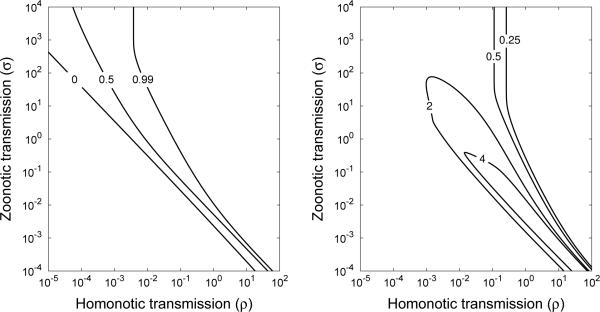Figure 3.
A. The emergence probability of type 3 given that type 5 emerges (Eq. (7)). B. How many times more likely type 5 is to emerge while type 3 becomes extinct, compared to the emergence probability of type 5 in the absence of reservoir effects (calculated from Eq. (9)). For large zoonotic transmission and homonotic transmission intensities, type 5 is unlikely to emerge without type 3 also emerging. For small homonotic transmission and zoonotic transmission intensities, the probability of emergence is about the same as it would be in the absence of a reservoir. Reservoir effects are most important when homonotic transmission is common but zoonotic transmission is rare. This is the parameter region of highest public health risk, since there will have been little opportunity for development of control measures based on partially-adapted strains prior to emergence. For example, if ρ = 1 and σ = 0.01, the probability of emergence of type 5 without the emergence of type 3 is more than 4 times as great as it would have been without reservoir interactions. Parameter values were κ = 0.99, and m = 0.01.

